After the resource drought of the last few months, July gave us a bounty of wonderful new Japanese learning resources! If this is your first time joining us, you're in for a real treat. July was fantastic for new J-resources, so if you're looking for something new, we've got the goods. 💰
- 吸血鬼の英文法 (A Vampire's English Grammar)
- Learn to Read in Japanese, Volume II: A Japanese Reader
- Japanese Graded Readers App
- 漢字爆発 (Kanji Explosion)
- Jimmy: The True Story of a True Idiot
- Japanese Number Converter
吸血鬼の英文法 (A Vampire's English Grammar)
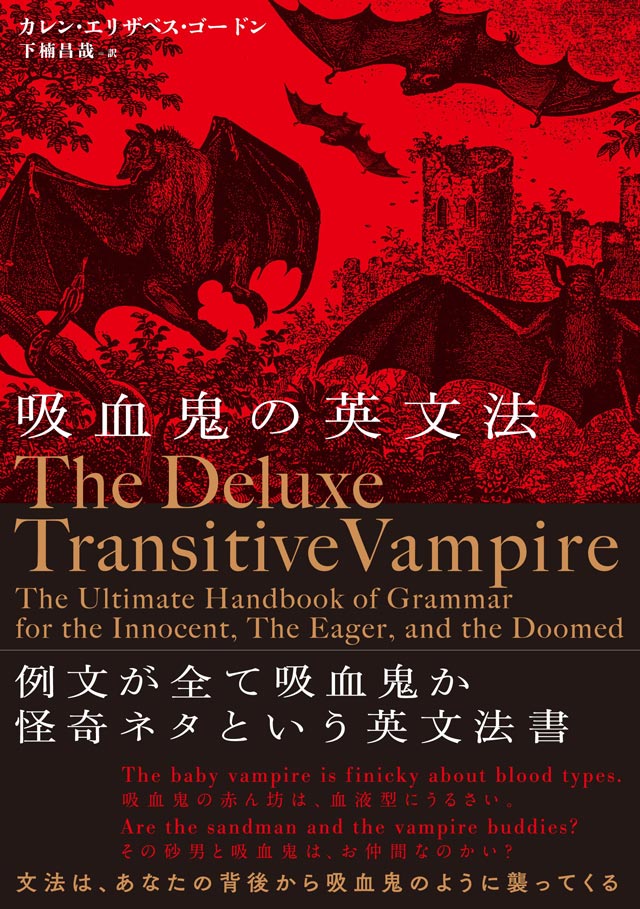
A very unique book was translated into Japanese, called The Deluxe Transitive Vampire: The Ultimate Handbook of Grammar for the Innocent, the Eager, and the Doomed. From that title alone, you can probably tell this isn't your grandmother's grammar resource (unless she was a member of the Addams Family or something — either way, I won't judge).
The Japanese translation, simply「吸血鬼の英文法」(A Vampire's English Grammar), covers important English grammar using examples and references from the strange, dark, and unusual. All of the explanations are in Japanese, but the example sentences are provided in English with Japanese translations. Sentences like:
- あなたが花を送り続けてきたロボットは、心の内を露わにしている。
- The robot you've been sending flowers to is wearing his heart on his sleeve.
- この足跡を残した妖精は、いつもははるかに用心深いんだがね。
- The nymph who left these footprints is usually much more cautious.
- もし私が最初に死んだら、私を棺に納めてくれるかね?
- If I die first, will you tuck me into my casket?
If you've been looking for unique sentences to study from, this book is a goldmine. You get to read about English grammar explanations in Japanese, too, which I think is pretty interesting. And because it's a translation of an English grammar book, you can always purchase both and use them side by side to simultaneously improve your Japanese and English grammar.
Learn to Read in Japanese, Volume II: A Japanese Reader
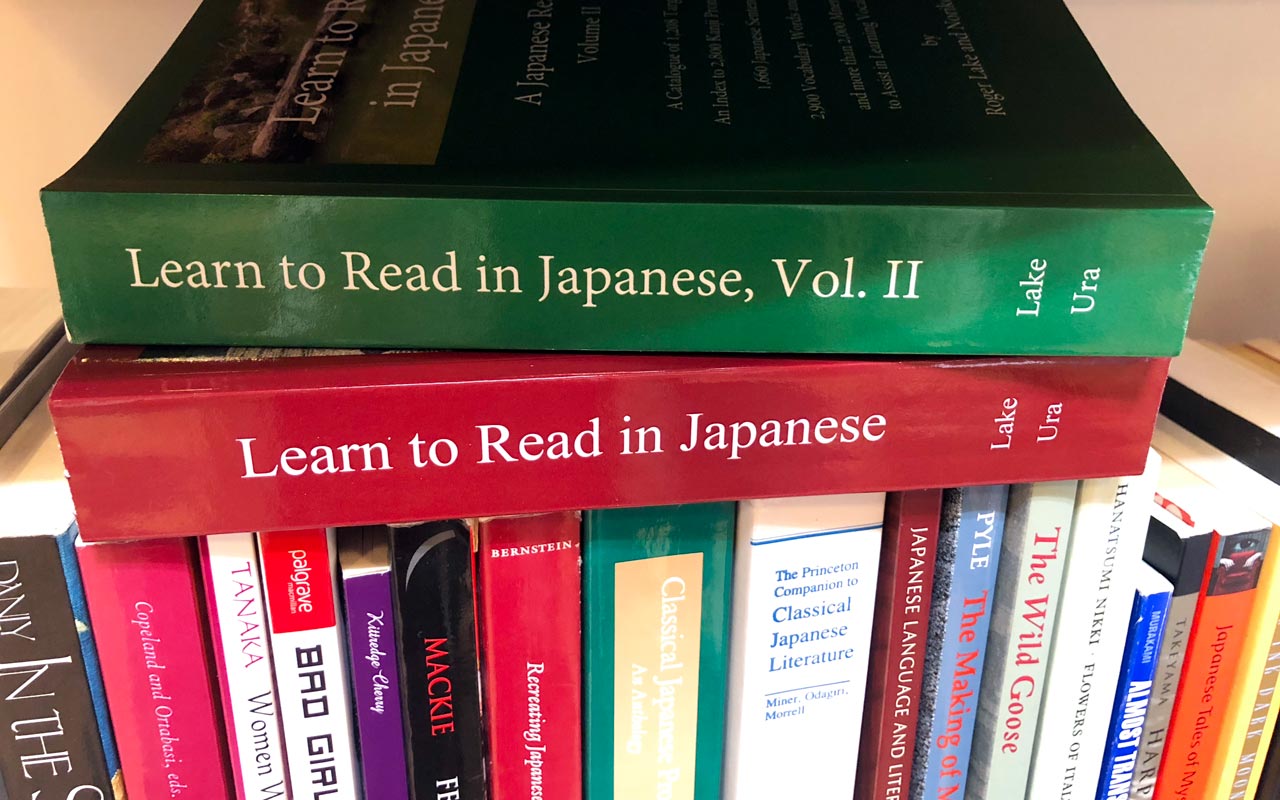
In our very first JLR article, we covered Learn to Read in Japanese, Volume I by Roger Lake and Noriko Ura.
The second volume covers 1,208 new kanji, 1,660 example sentences, 2,900 words and phrases, and tons of mnemonics to remember them all. Just like Volume I, it's huge and chock full of really great information.
Each chapter teaches eight target kanji with related vocabulary words, and each vocabulary word has a mnemonic story to help you remember the reading and meaning. There are also a few additional vocabulary words, using kanji previously learned in volumes one and two, with their own mnemonics.
Finally, there are practice sentences using the target vocabulary, with romaji breakdowns and literal English translations. If you've been looking for reliable, accurate Japanese sentences to study from, there are thousands to choose from.
For example, when you learn the kanji 確:

You also get to use example sentences like:
- 私の時計は君のより正確だ。
- My watch is more accurate than yours.
- 確かに彼は信頼できます。
- Certainly you can rely on him.
- 彼は念入りに書類を確かめた。
- He checked the documents meticulously.
Another unique feature of Volume II is that it offers compatibility with Satori Reader (another resource we've discussed before). After completing certain chapters of the book, there are optional instructions guiding you to the Satori Reader chapters you should read for supplemental practice. Some of the vocabulary taught in Volume II is also specifically there to support your ability to read Satori Reader articles better. There's even a secret code for Satori Reader that you can get from the book.
It's a win-win!
Japanese Graded Readers App
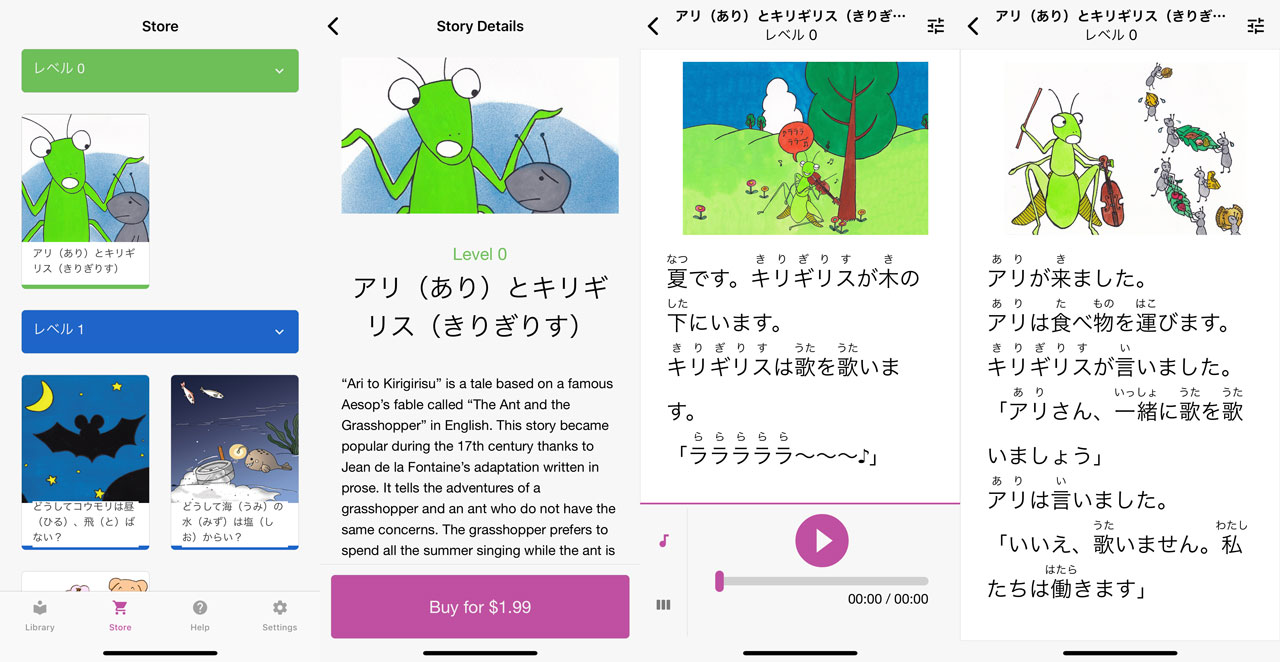
The Japanese Graded Readers app is available on both iOS and Android, and published by White Rabbit Press. The stories in the app are also from the NPO Tadoku Supporters collection, however, there are only 9 stories available, and these stories are only in the levels between 0 and 3. The app comes with a short sample, and then each subsequent story can be purchased independently for either $2.99 or $3.99.
All the stories are relatively short, usually around 10 or 15 pages or so. They tend to cater more towards folk stories or children's tales, but I still found them relatively interesting. I read a folk tale about bats, one about the sea, and a retelling of the O. Henry short story "Witches' Loaves."
Given the greatly reduced library and cost associated, you might wonder why you'd choose to use this app instead of the free online books. For one, it's very convenient to have stories as an app. Especially given the short length of most of them, it's easy to pull out your phone while waiting in line for coffee and read a bit in Japanese. Additionally, the app has a lot of helpful options that the online libraries lack. For example, you can change the size of the text, toggle furigana on and off, and enable autoplay to advance the story. Images can be clicked on and enlarged, and there's audio that matches every page, allowing much finer control if you want to repeat something.
Despite these conveniences, the app's limitations make it difficult to recommend for most learners. If the library were larger to match or include some of the free books from the NPO site, or if it were possible to purchase discounted sets of books, it might be an easier sell. The user experience is great, which only makes the limitations all the more frustrating here. If you're already studying most often on your phone rather than a computer, or strongly prefer having more control over the viewing options, this might be a good place to look.
漢字爆発 (Kanji Explosion)
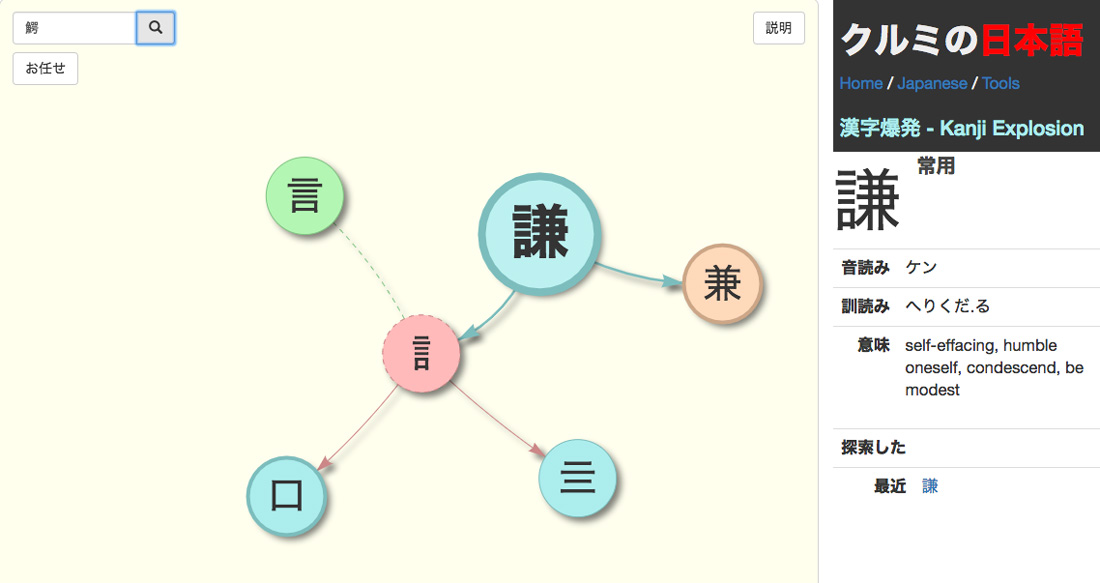
Kanji Bakuhatsu is a neat site that you can use to visually understand the components of kanji. This is basically like Suiren (a resource we also covered), but backwards. Instead of exploring what vocabulary words a kanji appears in, you can see what kanji parts appear in multiple kanji.
While this is more for aesthetics and good ol' fashioned educational fun than true studying, there are some cool things you can discover when you're looking up kanji radicals and their parts.
For example, if you were to look up the kanji 検, you'd notice 㑒 is listed among the parts. Hmm, you've seen that in a lot of kanji before. Double click it and you get:
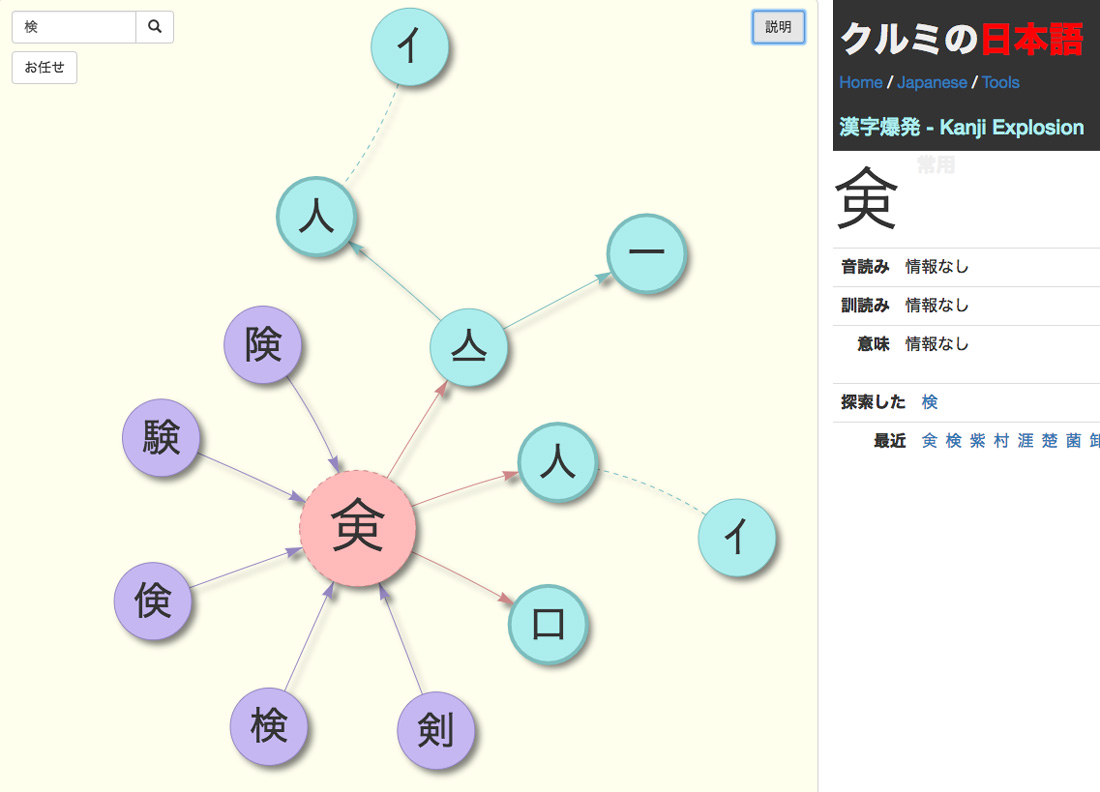
A cool map of kanji that also use that component, as well as the bits that make up the shape of the component itself. Clicking around on those kanji pulls up the dictionary meanings and readings and… you'll discover all of these kanji have the same on'yomi reading: けん! Very cool.
If you're the type of person who likes to see things mapped out, if that helps you remember things better, this site is a really fun rabbit hole to lose yourself in.
Jimmy: The True Story of a True Idiot
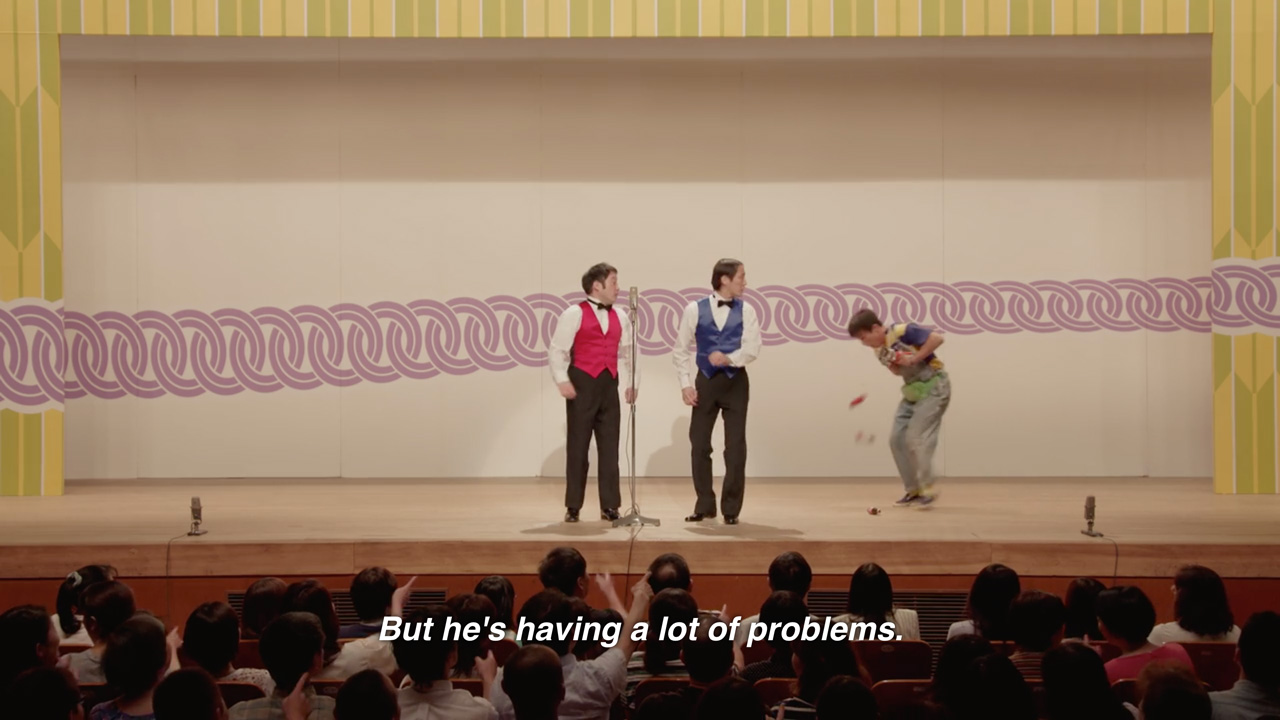
Ahh, Gaki no Tsukai. One of the best television shows of all time. The long-awaited release to US audiences… ah 違う、すまん。
Gaki no Tsukai isn't coming to Netflix (how dare you, Netflix, do it already you cowards), but a dramatized "documentary" of sorts about frequent cast member Hideaki "Jimmy" Onishi did come out. It's called "Jimmy: The True Story of a True Idiot."
Before you rush over to Netflix, beware!
This show is very "on brand" for the kind of humor Gaki no Tsukai is known for. It's dirty and childish and inappropriate and sometimes just plain gross. Now that that's over with…
Jimmy is a show about a really simple guy who has trouble understanding many basic things. It centers around his misunderstandings, and the antics that occur around him and the other comedians.
You can use these simple conversations, mistakes, and antics to your advantage. When Jimmy is told:
- なめてもええぐらいきれ〜いになるまで磨き。
- I want you to make the floor so clean, you can lick it.
He actually licks the floor after each wipe, because, well, that's what he was told to do. Technically.
The show has English and Japanese subtitles, so if you miss a joke, it's easy to switch between languages to check. And you can learn a lot about Jimmy's life and laugh a lot while you learn.
Japanese Number Converter

Sometimes numbers are hard, especially numbers in a language you're trying to learn. Numerals are great, because they're the same in every language, but what if you need to write a really big number in kanji or say it out loud, and you aren't sure if you're right?
This little website will convert any number from 1 to 999,999,999 into kanji, hiragana, and romaji.
It's as simple as that. But for people who have trouble with numbers and math, sometimes you just need to double check your work, you know?
Plus, now you know that 999,999,999 in kanji is:
Kanji: 九億九千九百九十九万九千九百九十九
Hiragana: きゅうひゃくきゅうじゅうきゅうまんきゅうせんきゅうひゃくきゅうじゅうきゅう
Romaji: kyuu hyaku kyuu juu kyuu man kyuu sen kyuu hyaku kyuu juu kyuu
Amazing.
I hope you enjoy these hot, fresh resources straight from July's oven! And remember, if you find any new Japanese learning resources, let us know on Twitter (@tofugu) or by email at hello@tofugu.com, and we'll love you forever and ever and ever and ever. ♡
